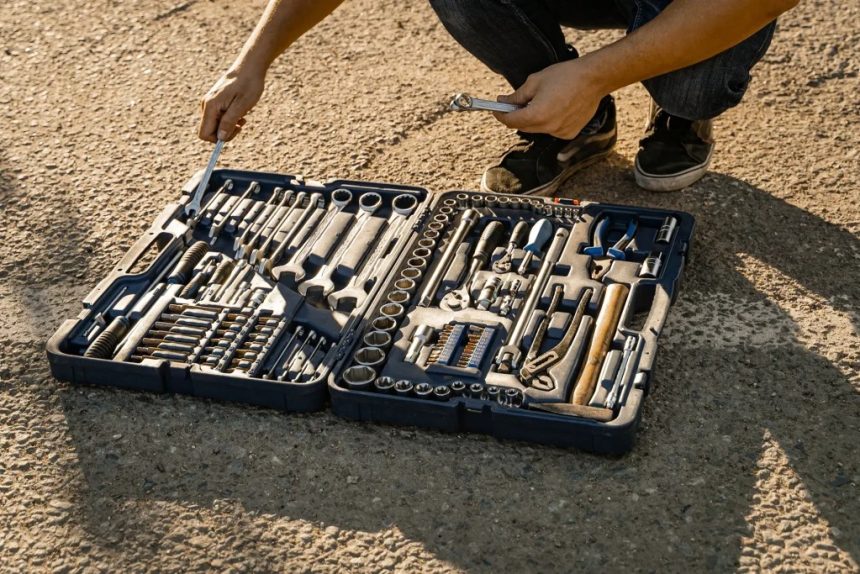The Importance of Tool Storage
Effective tool storage is more than just a way to keep your workshop tidy. It’s a means of enhancing productivity, protecting investments, and ensuring safety in any environment where tools are frequently used. Whether you’re a professional tradesperson or a home DIY enthusiast, understanding the nuances of organising your equipment is crucial. Well-maintained Tool Boxes are a cornerstone of this organisation, providing a secure and accessible place for all your essential items.
Choosing the Right Tool Box
With a myriad of options available in the market, selecting the correct Tool Boxes for your needs is the first step towards optimal organisation. Consider the size, material, and configuration of the Tool Box. The size should accommodate your current collection and allow for future acquisitions, while the material should ensure durability and longevity. Configurations with drawers, trays, or compartments help in segregating tools and make retrieval effortless.
Benefits of a Quality Tool Box
Investing in a high-quality Tool Box brings a multitude of benefits. Firstly, it helps in maintaining an uncluttered workspace, thereby reducing the time spent searching for tools. Secondly, it safeguards your tools from environmental damage such as rust or corrosion. Thirdly, the right Tool Box can help prevent accidental injuries by keeping sharp and hazardous items contained.
Tool Box Organisation Tips
Meticulous planning goes into keeping a Tool Box organised. Begin by categorising your tools based on frequency of use, size, or function. Ideally, frequently used tools should be easily reachable, while others can be stored deeper within the Tool Box. Use foam inserts, dividers or labels to keep small items in place and clearly visible. Lastly, maintain a regular cleaning and reorganisation schedule for your Tool Box to keep it functioning optimally.
Mobile vs. Stationary Tool Boxes
Mobile Tool Boxes come with wheels and are ideal for those requiring to move their Tool Box around different work sites or within large workshops. Conversely, stationary Tool Boxes are designed to stay in one place and often come with a sturdier build. Evaluate the need for mobility against the convenience of having a fixed location for your tools before deciding.
Tool Box Security
The security of your tools is paramount, given the investment they represent. Look for Tool Boxes with robust locking mechanisms to deter theft and unauthorised access. Additionally, consider incorporating security practices such as inventory checks and tool sign-out systems, especially in environments where multiple users access the Tool Boxes.
Customisation and Personalisation
Many Tool Box owners value the ability to customise their storage solutions. This can range from adding additional compartments, mounting them on custom stands, or personalising them with decals and colour codes. Such customisation aids in quick identification and enhances the overall efficiency of tool retrieval.
Maintenance and Care of Your Tool Box
Regular maintenance ensures the lifespan of your Tool Box. Keep the exterior clean and check for any signs of wear or damage. Hinges and locks might require lubrication over time to maintain smooth operation. Interior cleanliness is just as important, preventing the build-up of grime that could damage your tools.
Future-Proofing Tool Storage
As your tool collection evolves, your Tool Box should adapt accordingly. Opt for modular designs that allow for expansion, or invest in additional Tool Boxes to accommodate growth. Ensure that any new purchase is compatible with your existing system to maintain a coherent and streamlined storage solution.
Tool Box Limitations and Solutions
Even the best-designed Tool Box will have limitations. For instance, they may not offer the right size or shape for very large or unusually shaped tools. In such cases, consider supplemental storage options such as wall racks or stand-alone tool chests to complement your primary Tool Box.
Impact of Organisation on Workflow
Effective Tool Box organisation can have a significant positive impact on workflow, reducing downtime and increasing efficiency. By knowing exactly where every tool is located, you minimize the distractions and interruptions caused by disorganisation, thereby streamlining your work process.
Tool Boxes for Different Professions
Tool Boxes are not one-size-fits-all. Different professions might require distinct features in a Tool Box. Electricians could need boxes with compartments for small, delicate parts, while mechanics may opt for larger, more rugged designs. Recognise the demands of your specific field when choosing a Tool Box.
Conclusion
Mastering the art of tool storage with the right Tool Box is pivotal in any workspace where tools play an integral role. By considering the aspects of size, material, configuration, and mobility, you can select a suitable Tool Box that enhances your productivity and protects your tools. Regular organisation, maintenance, and potential customisation allow you to maintain a Tool Box that evolves with your needs while ensuring longevity and reliable service.
Bring Order to Chaos
In summary, the quest for efficient tool storage is an ongoing journey of refinement and adjustment. Embrace the principles outlined in this ultimate guide to make the most out of your Tool Boxes, transforming chaotic collections into well-ordered arsenals that enable you to tackle any task with confidence and precision.
Final Thoughts
Whether for professional use or personal project indulgence, the commitment to organisational mastery through the right Tool Box can spell the difference between frustration and fluidity. Embrace this guide, choose your perfect match, and never underestimate the power of a well-organised set of tools to revolutionise your work processes.








